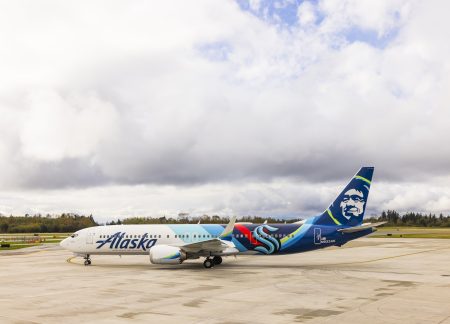Alaska Airlines Grapples with Major IT Outage, Cancels Hundreds of Flights
Alaska Airlines faced significant operational challenges on Thursday as a major IT outage forced the Seattle-based carrier to cancel more than 360 flights across its main operations and subsidiary Horizon Air. The disruption, which began around 3:30 p.m. Pacific Time on October 24, 2025, led to a nationwide ground stop as the airline worked to address what it described as a “significant IT outage” stemming from a failure at its primary data center. This technical breakdown impacted several key systems essential for various operations, prompting the airline to implement the ground stop to keep aircraft safely positioned. In its official communications, Alaska Airlines emphasized that “the safety of our flights was never compromised” and clarified that the incident was not related to cybersecurity concerns, though the company has yet to provide full details about the root cause of the data center failure.
The impact of this technical failure was immediately visible at Seattle-Tacoma International Airport, where travelers faced extraordinary challenges throughout Thursday evening. Long lines of frustrated passengers wrapped around concourse areas while a chaotic scene unfolded in the baggage claim section, where a maze of unclaimed suitcases accumulated as disrupted flight operations prevented normal baggage handling procedures. Many travelers were left stranded, uncertain about their travel plans, and struggling to locate their belongings amid the confusion. The airline encouraged customers to verify their flight status before heading to the airport and highlighted its flexible travel policy to accommodate those affected, though these measures provided little immediate relief to those already caught in the disruption. Notably, Alaska’s Hawaiian Airlines subsidiary operated normally, as its systems remained unaffected by the outage.
Though the airline managed to lift the ground stop by 11:30 p.m. Pacific Time on Thursday, the operational aftermath continued to unfold well into the following day. Alaska Airlines acknowledged in its statements that it was “still actively addressing operational impacts that resulted from the disruption,” suggesting a complicated recovery process that would likely continue affecting travelers for days. The timing proved particularly unfortunate as it coincided with the company’s scheduled third-quarter earnings announcement, forcing Alaska to cancel its planned earnings call on Friday. In a regulatory filing, the company admitted, “We do not yet have an estimate of the financial impact of the operational disruption on our fourth quarter results.” Before the disruption, Alaska had reported revenue of $3.8 billion for the third quarter, representing a modest 1.4% increase year-over-year, while profit had already declined significantly—dropping 69% to $123 million—even before accounting for the costs of this major operational failure.
This incident marks Alaska Airlines’ second major outage in just three months, raising concerns about the resilience of the carrier’s technological infrastructure. The previous disruption in July 2025, while shorter at approximately three hours, similarly resulted in grounded flights and passenger inconvenience. This pattern of repeated technical failures may raise questions among industry observers, regulators, and customers about whether the airline is sufficiently investing in robust backup systems and disaster recovery protocols. As airlines increasingly rely on complex, interconnected IT systems to manage everything from reservations to flight operations, such vulnerabilities can have outsized impacts on thousands of travelers and ripple effects throughout the transportation ecosystem. The recurrence of such problems at one of America’s major carriers highlights the critical importance of technological resilience in modern aviation.
The financial implications of this disruption extend beyond the immediate costs of canceled flights and passenger accommodations. Alaska Airlines now faces potential long-term damage to customer trust and loyalty, particularly among business travelers who depend on reliable service. The company’s already concerning 69% drop in quarterly profit before this incident suggests existing operational challenges that could be exacerbated by the added costs of recovery and potential compensation to affected passengers. Industry analysts will likely be watching closely to see how this event impacts Alaska’s fourth-quarter performance and whether it prompts renewed investment in technological infrastructure. The airline’s decision to cancel its earnings call further underscores the significance of the disruption and suggests leadership is fully focused on operational recovery rather than financial messaging during this critical period.
As Alaska Airlines works to restore normal operations, this incident serves as a stark reminder of the aviation industry’s dependence on functioning technology systems and the cascading effects that can occur when those systems fail. For passengers, the experience highlights the vulnerability that comes with modern air travel—where a single point of failure at a data center can strand thousands of travelers across the country in a matter of hours. For the airline industry as a whole, Alaska’s challenges may prompt renewed evaluation of disaster recovery protocols and system redundancies. As passengers at Sea-Tac Airport and across the country gradually resume their journeys in the coming days, the focus will shift to understanding what went wrong, how similar incidents can be prevented in the future, and what steps Alaska Airlines will take to rebuild confidence among its customer base after this significant operational failure.















